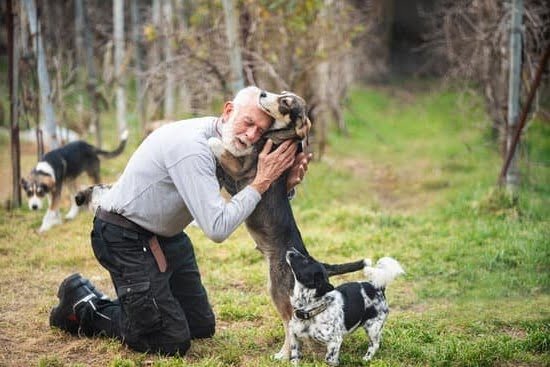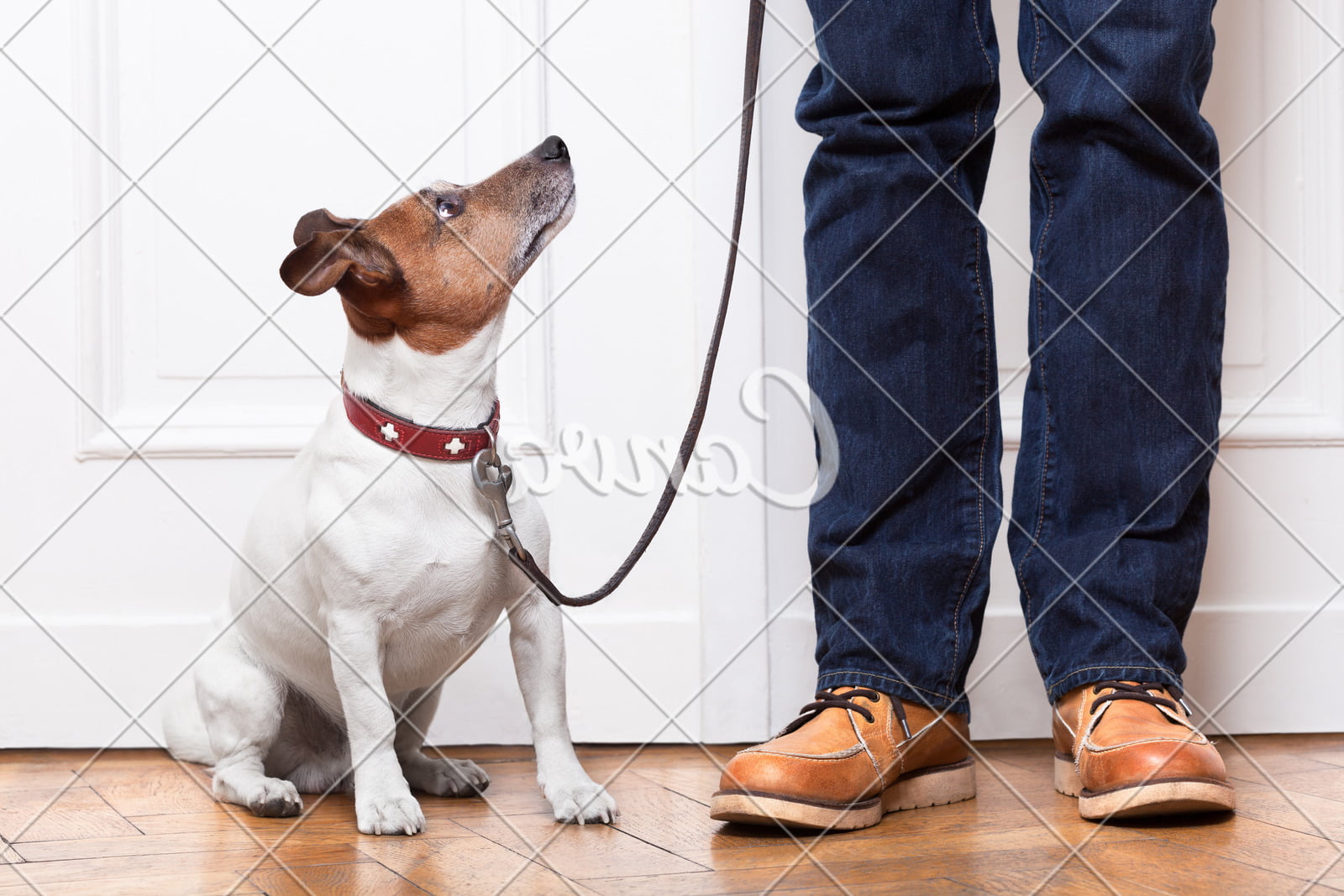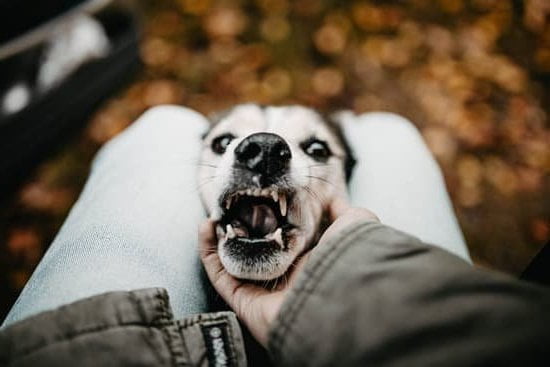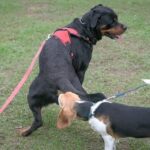Introduction
Having a well-trained dog that is comfortable around other dogs is invaluable. Not only will it make walks in the park more enjoyable experiences for both you and your pup, but it can also help ensure safety if ever exposed to an aggressive dog while out of the house. It can also be beneficial when taking multiple dogs on outings at once, keeping them calm and focused on their handler rather than agitatedly interacting with each other. Lastly, teaching your pet to get along with other dogs can help prevent territorial issues and ease introductions when meeting new furry friends.
For these reasons, training your dog to accept – or at least tolerate – the presence of others is an important skill set to teach your pup. Although even the most social pups may sometimes have difficulty getting along with particular types of members from within the canine population, a few sessions of consistent positive reinforcement training can go a long way in preventing negative interactions between dogs.
There are a variety of approaches one might use when helping a furry friend learn that not all dog-dog encounters need lead to barking, snarling or any unhappy behaviors such as fear or aggression. Outlining some general tips for introducing pets to one another, understanding body language cues during initial meetings as well as ongoing activities during canine interactions are all essential areas which should be addressed in order for a successful outcome:
1. Start off slowly with proper introductions: When introducing two unknown pets, keep them on opposite sides of a tarped area (such as fence railings) so they may get used to each other’s scent before making physical contact. Having treats ready to reward calm behavior will help increase the chance that initial impressions created by both animals are positive and relaxed instead of tense or confrontational.
2. Establishing Rules & Boundaries: Taking strict charge over how both animals interact while under human supervision will provide guidance and confidence during group activities such as walks or trips within fenced-in yards. This helps educate domestic companions about acceptable behaviors like ignoring one another without disruption arising from spats over territory disputes and which pup is higher ranking overall than its companion(s).
3. Create Positive Associations Through Rewards & Low Stress Activities: Once comfortable enough for longer periods of exposure (intensity leading up there will dictate length spent together), pass out rewards whenever either animal avoids being provoked into aggression by simply walking away rather than responding negatively towards another’s presence or aggression towards them/you . Additionally “low stress” games such as hide & seek or letting pets chase bubbles outside can help establish friendly acquaintanceship among unrelated doggos!
Socialization Breakdown
Socialization is the process of introducing a dog to other animals, people, sights, and sounds. It helps puppies learn how to respond and behave in different situations, enabling them to be comfortable with all scenarios they may encounter. It also encourages healthy interactions between pups, which can foster good behavior when dogs meet each other at the park or pet store.
There are several techniques you can use for socializing your pup:
1. Start early: Introduce your pup to new people and environments before they are four months old. This will allow them to get used to outside influence during a crucial time in their development.
2. Use positive reinforcement: Rewards like verbal approval or treats can motivate good behavior when socializing your pup with various animals and people .
3. Go slowly and introduce one new thing at a time: Too much change too soon may overwhelm your puppy and could cause them to become fearful or anxious about the unknown. Take it slow and always reward good behavior so that assertiveness is encouraged..
4. Give them space: Not every dog is receptive to meeting other dogs straight away; let your pup take their time getting familiar with the situation on their own terms. Provide escape routes if needed – there are enough obstacles around for an energy-filled pup needing a bit of space!
5. Get help from experts: Sign up for professional classes that offer dog trainers on site who can give you personalized tips tailored specifically to your pup’s needs as they develop in social situations.
Professional Tips
Dog training to get along with other dogs is an important aspect of responsible pet parenting. It can help reduce anxiety, fear and other behavioral issues. When done properly, it can also be a great way to bond with your fur-baby. So how do you accomplish this? Professional dog trainers from around the world have a few tips for you!
First, start at home by giving your pup daily obedience lessons. This will help them understand that they must obey even when distracted by another dog, which is essential when they eventually meet one. During these lessons, practice basic commands like sitting, staying, coming and going in different contexts so that your pup learns to respond quickly and reliably no matter the situation.
Next, socialize your pup slowly with other dogs and reward calm behavior. Allow your furry friend some time to explore and sniff around while on a leash and gradually increase the length of playtime where appropriate. Positive reinforcement training and practical exercises designed to help build confidence in new situations may also be beneficial in helping them become more comfortable in different environments – especially when there is a canine companion involved!
Finally, always respect boundaries set by both humans and animals alike when meeting any new four-legged friend for the first time during dog training sessions. Respect is key: if either party does not feel comfortable during introductions or interactions then it’s best to take a step back until everyone feels safe enough to interact again in the future.
Crate Training Benefits
Crate training can be beneficial for helping dogs socialize with other dogs. Crate training involves providing a dog with a safe and isolated environment where they can feel comfortable and secure. By using this method, dogs learn that the crate is a familiar place which helps them to relax and take regular breaks during active times or when they are around other animals or people. This can go a long way in helping the dog to gain confidence while in public and around other dogs. Additionally, crate training teaches the dog how to control their emotions and better understand how their own behavior affects the behavior of others. Furthermore, crate training works to establish healthy routines; as it provides structure and discipline which are important building blocks for socialization. By having consistent routines that include periods of activity and rest, dogs can learn proper behaviors in terms of energy management so they don’t become overwhelmed or anxious with large amounts of stimuli from many different environments.
Dog Introductions
It is important to introduce a new dog in the right way if you want them to get along with other dogs. Dog introductions should be done in a controlled, safe manner that minimizes stress for both animals. To do this it’s important to understand canine body language and learn to read your dog’s behavior, as well as that of any other dogs in the area.
The first step in introducing dogs properly is to have each dog on a leash held by its respective owner. This will allow you to quickly react and intervene if either dog becomes uncomfortable or aggressive during the introduction process. You should ensure that the leashes are loose so that neither animal feels restricted or unsafe. It is also important to have treats readily available so you can reward your dogs during positive encounters with one another.
Next, give both dogs ample time and space to sniff each other and become more comfortable around each other before allowing them to interact further. If either dog seems uncomfortable, make sure they are being given enough space and start again at a further distance away. Once both dogs appear calm and comfortable around each other, you can then move closer together gradually until they are able to start interacting comfortably together with minimal intervention from their owners.
Regularly taking your dog out with you into public spaces such as parks or off-leash areas can also aid their socialization skills when meeting other pups; however, it is key that your furry friend feels safe and comfortable at all times when doing so! Following these simple steps during introductions are key in helping foster healthy bonds between our furry friends!
Puppy Party Planning
Hosting a puppy party is a great way to ensure that your dog gets the necessary training for socializing with other dogs. It is important to prepare in advance so that all involved pup parents can be confident in the quality of play and interactions their pup will be exposed to. To start, plan a park or open space where it’s safe for all pups to roam freely. Get enough toys and treats to provide for multiple pups. When choosing which other dogs should attend, look for friendly pups of the same size, age, and energy level as yours – this helps keep things under control. On the day of the party, make sure no leashes are used so that all pups feel free to move around and not held back by restrictions. Finally, offer water bowls throughout and keep an eye out during playtime. Supervise activities while providing encouragement when they interact positively with each other. This way new behaviors are reinforced during playtime allowing your pup build self-confidence while getting along with their furry friends!
Rewarding Dog Behaviour
One of the most important aspects of dog training to get along with other dogs is to reward them for desired behaviors. This type of training, known as positive reinforcement, helps form a bond between you and your dog. By providing positive reinforcement when your dog behaves correctly, it reinforces the same desired behavior in the future.
The best way to provide positive reinforcement is through treats or verbal praise. To help condition your dog to associate rewards with good behavior, give them a treat every time they perform a desired action such as sit or stay when asked. Building up their trust through positive reinforcement will make them much more likely to pay attention when you talk to them and attune their behavior towards other dogs.
You should also take the time to play and interact with your dog in order to teach them that behaving around other dogs will receive its own reward. Reward them with quality time anytime they display good behavior around other canines or politely shy away from aggressive ones. Doing this teaches them proper socialization skills while further strengthening the bond between you two—a win-win situation!
Additionally, strive make all interactions around other dogs pleasant experiences by assuring they are comfortable and secure during those moments. If a scary scenario arises, calmly remove your pup from it and focus on providing comfort instead of punishment—this will ensure they are learning the right lessons about canine interactions in the long run. Finally, attend obedience classes as often as possible in order to set up socialization opportunities for your pup with knowledgeable handlers monitoring each session for safety concerns. Good luck!
Tracking Dogs Progress
In order to get two dogs to get along, it is important to track the progress of their socialization. By using apps and technology, this task can be achieved quickly and easily. For instance, you can use a tracking app that measures the time it takes for your dog to become familiar with being in the presence of other dogs. Additionally, these same apps have components that measure whether or not your dog becomes agitated in the presence of fellow canines. This way you can see if anger or fear start affecting his behavior when another dog is around. Furthermore, there are various online resources available to monitor your pitbull’s health which might impede socialization such as heart rate or breathing rate during times with other dogs. Of course, all these technological objectives could also be done manually but these advancements certainly add a layer of convenience and accuracy to the process. Ultimately, using modern technology while training your pup is more effective than trying to do everything on your own.
Summary and Conclusions
Dog training to get along with other dogs begins with understanding canine behavior, and setting realistic expectations. Dogs of all breeds and sizes express their feelings through barking, growling, body language, scent marking, and be playing with one another. To help dogs learn proper social behavior around other dogs, owners should attempt to create a comfortable environment for the canine by introducing them to other Dogs in a relaxed setting and providing positive reinforcement whenever possible. When dealing with aggressive or overly excited behavior from either dog(s), appropriate corrections should be provided in order to keep everyone safe.
In the end, dog training to get along with other dogs can be a rewarding task that will leave both pet owners feeling satisfied. The key is to ensure that all parties involved are equally enjoying the process without over-exerting themselves. With patience and practice, both dogs can successfully begin learning to interact in a positive way and help prevent situations where one may become defensive or aggressive towards the other. Providing positive reinforcements such as treats, praise, belly rubs or playtime whenever the two coexist peacefully helps associate good times together so they eventually learn how to trust each other’s cues. Socializing pups regularly in various unfamiliar surroundings also allows them become better acclimated to different settings which enhances their future interaction skills when mixed within group environments; ultimately creating happy and well-behaved companions for years ahead!

Welcome to the blog! I am a professional dog trainer and have been working with dogs for many years. In this blog, I will be discussing various topics related to dog training, including tips, tricks, and advice. I hope you find this information helpful and informative. Thanks for reading!





